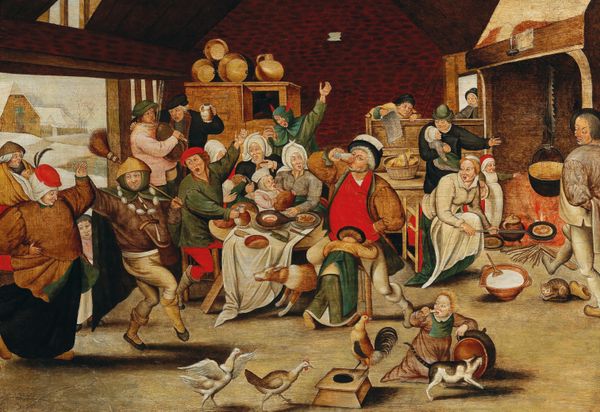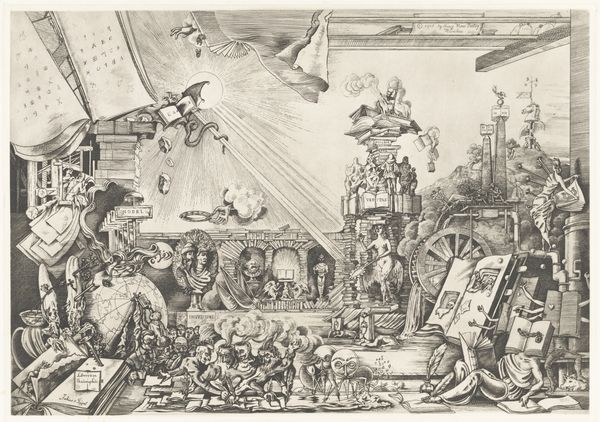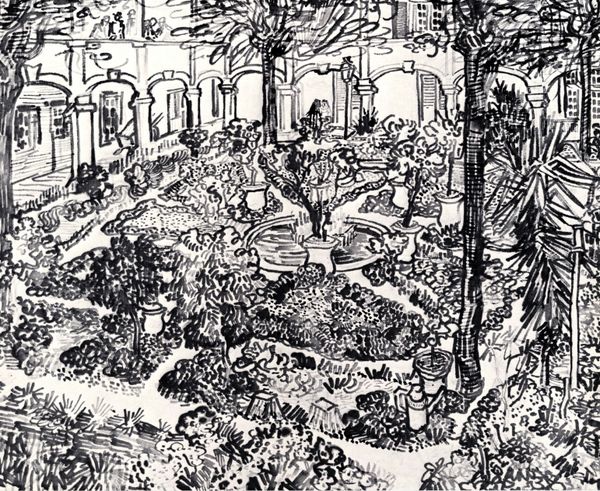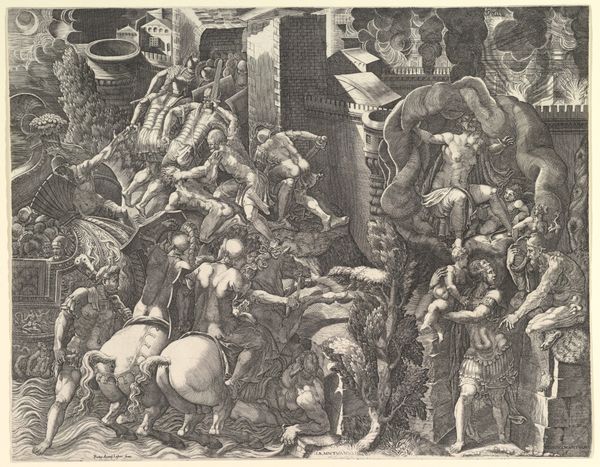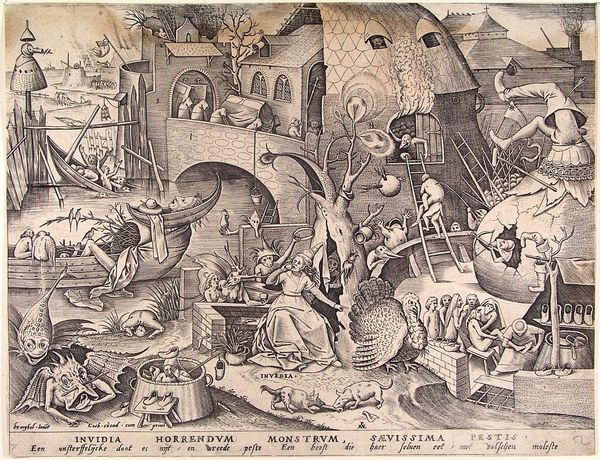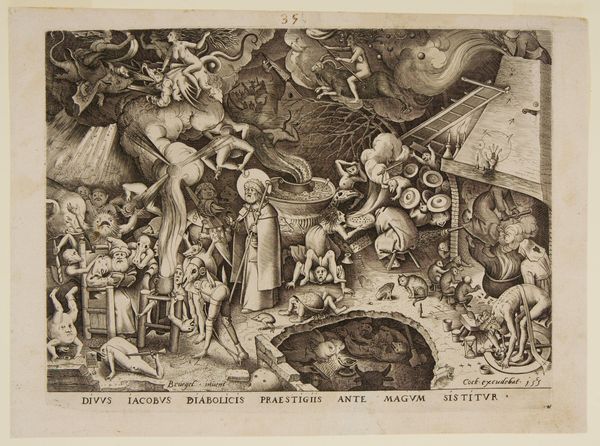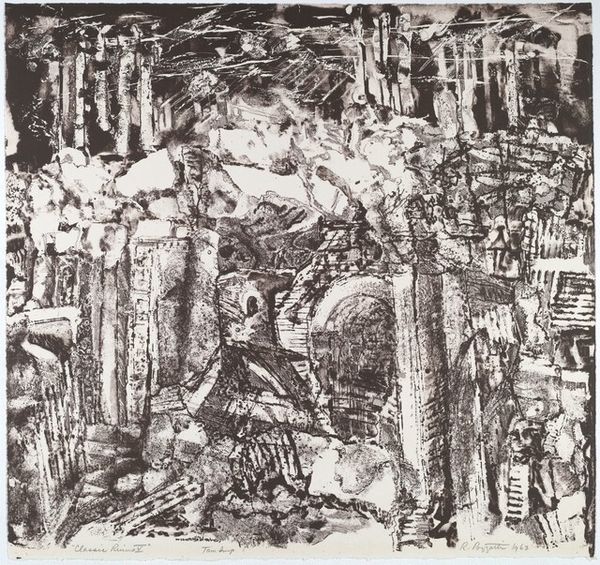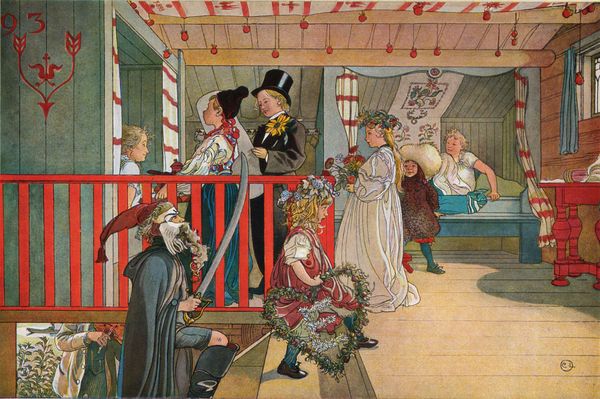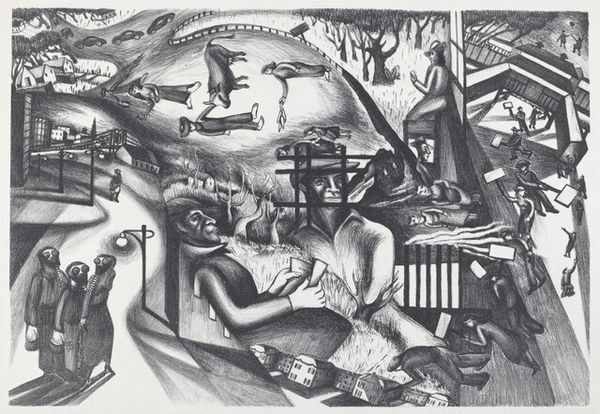
Copyright: Tsuguharu Foujita,Fair Use
Editor: Foujita's "Mechanic Age," painted in 1958 using watercolor, depicts a group of children amongst an array of mechanical toys and tools. The scene feels quite staged, almost like a theatrical production. What societal themes do you see present in this tableau? Curator: I see a commentary on the evolving role of childhood and technology in the mid-20th century. The artist’s use of distinctly Western-style toys within a composition populated by children with ambiguous ethnic features suggests a complex dialogue about globalization and cultural exchange. The children, positioned around a central table with tools, remind me of a factory floor. Editor: That's an interesting observation. The "factory floor" setup, the vacant expressions of the children...it's as if Foujita is presenting them not just as innocents at play, but as cogs in a larger machine. Do you think the work carries an implicit critique of early consumerism or even the post-war societal pressure for children to become technologically proficient? Curator: Absolutely. This piece can be understood as a snapshot of shifting cultural priorities in the aftermath of World War II. Foujita’s visual choices might subtly question the values instilled upon children amidst the rise of industrialization and mass consumerism, wouldn't you agree? The precise watercolor technique makes everything appear calculated. It leaves me wondering whether his choices are conscious, or perhaps even subconscious, observations on the part of the artist. Editor: It's remarkable how a seemingly simple genre scene can reveal such deep societal anxieties! Thanks for guiding me through this. I definitely see the image in a different light. Curator: My pleasure! It highlights how Foujita’s personal artistic style captured a larger social reality. It goes to show the continued relevance of art historical interpretations!
Comments
No comments
Be the first to comment and join the conversation on the ultimate creative platform.
